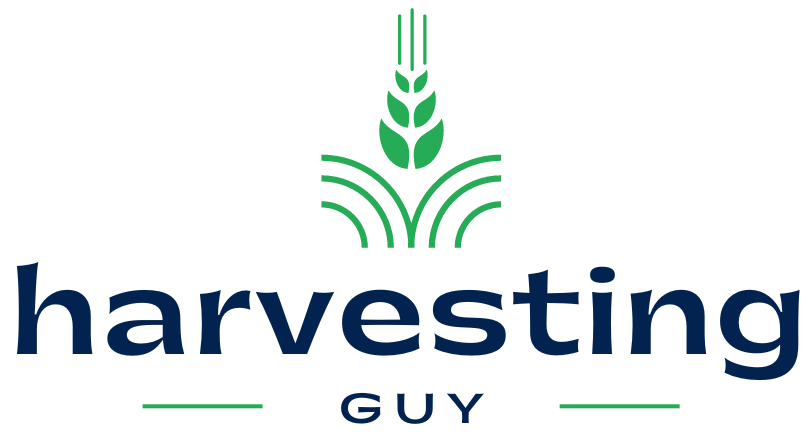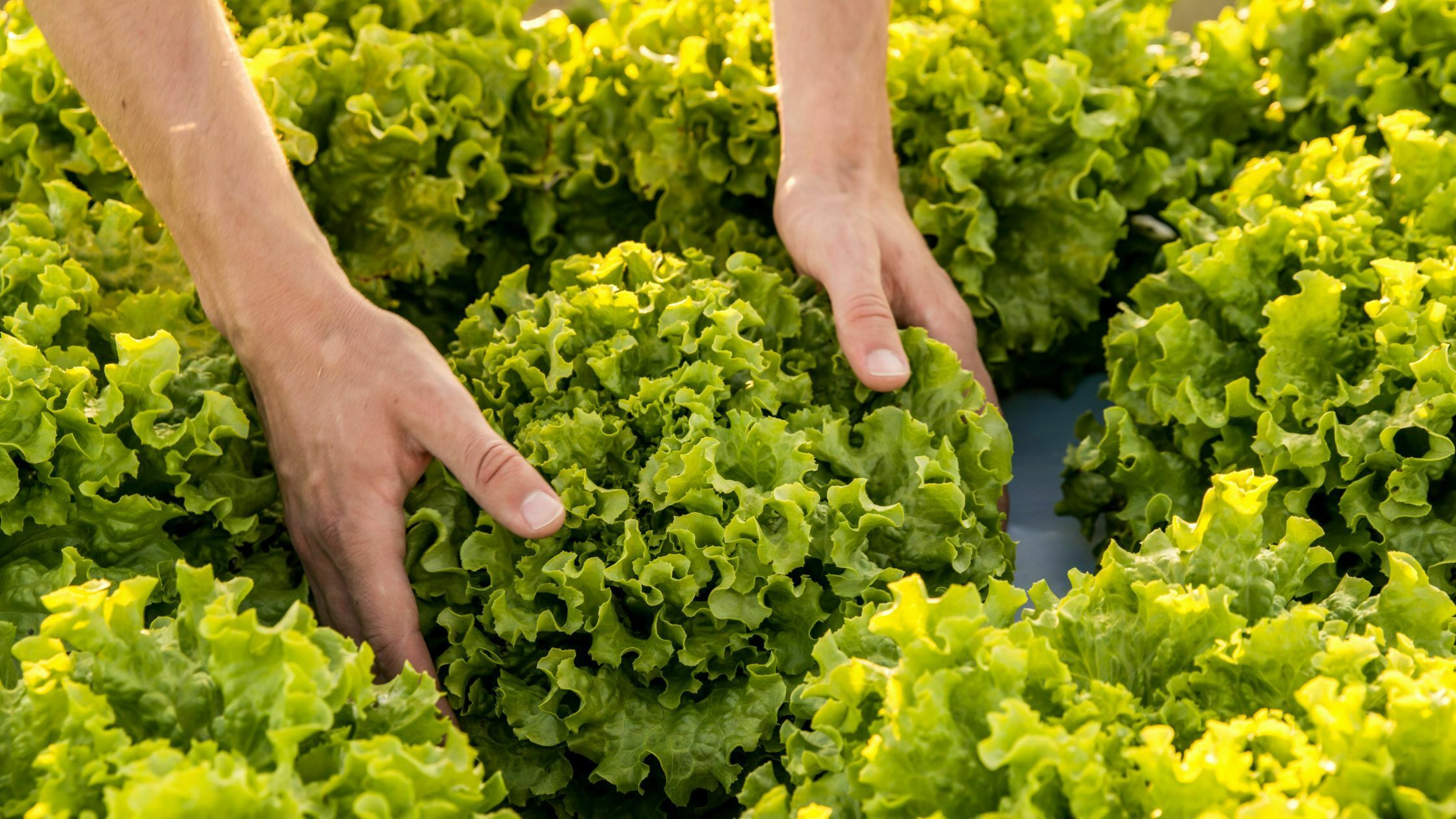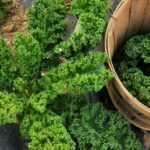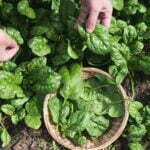If you have taken growing lettuce into your own hands, then harvesting is in your future, and learning how to do it the right way is a must. If you are new to harvesting, you may want to research and learn how to harvest lettuce properly.
Lettuce is a cool-season crop that grows best in the spring and fall in most regions. It’s a great leafy green to grow because it grows quickly, produces for a long time, and isn’t very demanding as long as you keep it sufficiently watered.
Though it may seem a little intimidating, harvesting lettuce is simple. Nonetheless, there are a few steps you need to follow and employ the right tools for the job. Continue reading below and discover everything you need to know about how to harvest lettuce.
How to Harvest Lettuce
To harvest leaf lettuces.
Using scissors or snips, cut the plant’s outer leaves until you have enough.
If you choose to harvest an entire plant, make sure to cut the plant about 1″ above the soil surface to ensure enough plant energy for regrowth.
To harvest head lettuce
Using a sharp knife or scissors, clip the entire head of lettuce at the base of the plant.
Head lettuces can also regrow, so make sure to leave about an inch of the plant above the soil surface so it can regrow.
To harvest lettuce microgreens.
Your lettuce microgreens will be ready 10-15 days after planting the seeds when the first true leaves have emerged. If you are gauging by height, harvest the microgreens when they are 2-3 inches.
Use a pair of scissors or grass shears and cut the entire plant ½ inch above the soil line.
To harvest stem lettuce
Stem or celtuce lettuce is different from the other lettuce varieties as it is appreciated for its stems.
Celtuce lettuce is ready for harvest when the stalk diameter is 1 inch and it is 8-14 inches. Cut the stalk at the base of the plant, right above the soil line. Or you can remove the entire plant by digging it up and trimming the base and roots off. The leaves will also need to be trimmed off before storing.
Recommended Product: Lettuce Lovers Seed Collection
[amazon box=”B01N5NG0OY” class=”lp-product-list” template=”vertical” image_size=”large” title=” ” image_alt=”alttexthere” description=”none” price=”none” button_text=”Check Latest Price” ]
Quality Lettuce seeds packaged by Seed Needs. This lettuce seed assortment includes 8 popular varieties: Iceberg, Red Romain, Parris Island Cos, Ruby Red, Oakleaf, Prizehead, Black Seeded Simpson, and Lollo Rosso.
Lettuce crops are annual plants that produce a single crop in a year of growth. Lettuce crops can vary in harvest dates, but the common harvest time is anywhere between 40 to 60 days.
Features:
- Non-GMO
- Eight popular varieties
- The current and following season
Recommended Product: Weeding & Digging Knife
[amazon box=”B0007WFG2I” class=”lp-product-list” template=”vertical” image_size=”large” title=” ” image_alt=”alttexthere” description=”none” price=”none” button_text=”Check Latest Price” ]
Made in Japan with the finest stainless steel, the Nisaku Stainless Steel Weeding Knife features serrated and straight-edge blades and is fantastic gardening, landscaping, and camping tool.
Features inch markings on the blade will ensure your plants and bulbs are planted at just the right depth.
Hangs neatly on your peg rack for a tidy shed or workbench.
Features:
- Finest stainless steel
- Faux leather sheath
- Serrated and straight-edge blades
Recommended Product: Kitchen Shears
[amazon box=”B07K72PHLS” class=”lp-product-list” template=”vertical” image_size=”large” title=” ” image_alt=”alttexthere” description=”none” price=”none” button_text=”Check Latest Price” ]
These kitchen scissors ensure non-slip cutting in various tasks, saving effort while avoiding accidental injury whenever you are using them.
Made with an environmentally friendly material handle, stylish and anti-skid, it makes you feel completely comfortable.
Stainless steel embedded in the handle deeply makes it solid and safe.
This comfortable and super sharp scissors will make food preparation easier and faster.
Features:
- Stainless Steel
- Multi-function
- Rust- resistance
Will lettuce grow back after cutting?
Head lettuce will die back, but most leaf-lettuce plants renew efforts to produce leaves regularly watered after trimming. Results will often be smaller than the original plant, but you may be able to harvest a second, good-tasting crop within as little as two weeks.
How many times can you harvest lettuce?
You can harvest from lettuce at least three or four times each if you stay within their optimal growing conditions.
How do I know when my lettuce is ready to harvest?
Depending on the variety, you’ll know when to harvest lettuce leaves when they grow to about 3 to 6 inches long. Keep harvesting the leaves until the lettuce plant bolts. This clearly indicates that the plant has turned its energy to produce flowers and seeds, and leaves usually become bitter-tasting with tough stems.
Does iceberg lettuce regrow after cutting?
Yes, lettuce leaves will grow back after cutting, but only if proper care and technique are used as all vegetable lettuce follow similar annual vegetable growth cycles.
When to pick leaf lettuce?
Lettuce is a cool-weather crop and, although it needs sun, is one of the few crops that will do well in partial shade. Unlike lettuces such as icebergs, loose-leaf lettuce doesn’t form a head but, instead, loose leaves. This means that while the entire head of the iceberg is harvested, picking loose-leaf lettuce is picking leaves.
Therefore, a loose-leaf lettuce harvest can begin anytime the leaves have formed before starting a seed stalk.
What are some recommended lettuce varieties?
- Crisphead
- Romaine (Cos)/Butterhead
- Loose-Leaf
- Red Leaf
When to plant lettuce?
- Direct sowing in the garden is recommended as soon as the ground can be worked.
- Lettuce can be sown after soils reach 40°F (4°C), though seeds germinate best at 55 to 65°F (13 to 18°C).
- Seedlings will typically emerge in 7 to 10 days.
- Nursery-bought transplants should be planted close to your last frost-free date.
- After your initial planting, sow additional seeds every two weeks to have a continuous supply of lettuce.
- In most regions, it’s possible to plant another crop of lettuce in the fall or even early winter.
Tips for choosing and preparing a planting spot?
- Select a sunny spot for the best growth.
- The soil should be loose and drain well so it’s moist without staying soggy.
- Work in the composted organic matter about one week before seed or transplant to keep the soil fertile.
- Since the seed is so small, a well-tilled seedbed is essential.
- Lettuce does not compete well with weeds. Spacing lettuce close together will help to control weeds.
How to plant lettuce?
- Seeds should be planted ⅛ to ¼ of an inch deep. Lettuce seeds need light to germinate, so don’t sow them too deep.
- Seedlings can be thinned when they have 3 to 4 true leaves.
- Transplants should have 4 to 6 mature leaves and a well-developed root system before being planted into the garden.
- Leave 12 to 15 inches between each planting row for seeded or transplanted lettuce.
- Water thoroughly at the time of transplanting.
What is a good barrier plant for lettuce?
Consider planting rows of chives or garlic between your lettuce to control aphids. They act as “barrier plants” for the lettuce.
How do you store lettuce so it stays fresh?
Lettuce needs cool, moist conditions to keep it fresh for as long as possible. The refrigerator has the cool part down, but not the most. You can wrap clean lettuce in a damp dishtowel and store it in an airtight container.
You can also use zip-lock bags, which keep lettuce fresh for 10-14 days.
What time of day is best to harvest lettuce?
You want to harvest lettuce during the coolest part of the day to prevent the leaves from wilting. It could be early in the morning or in the evening.



